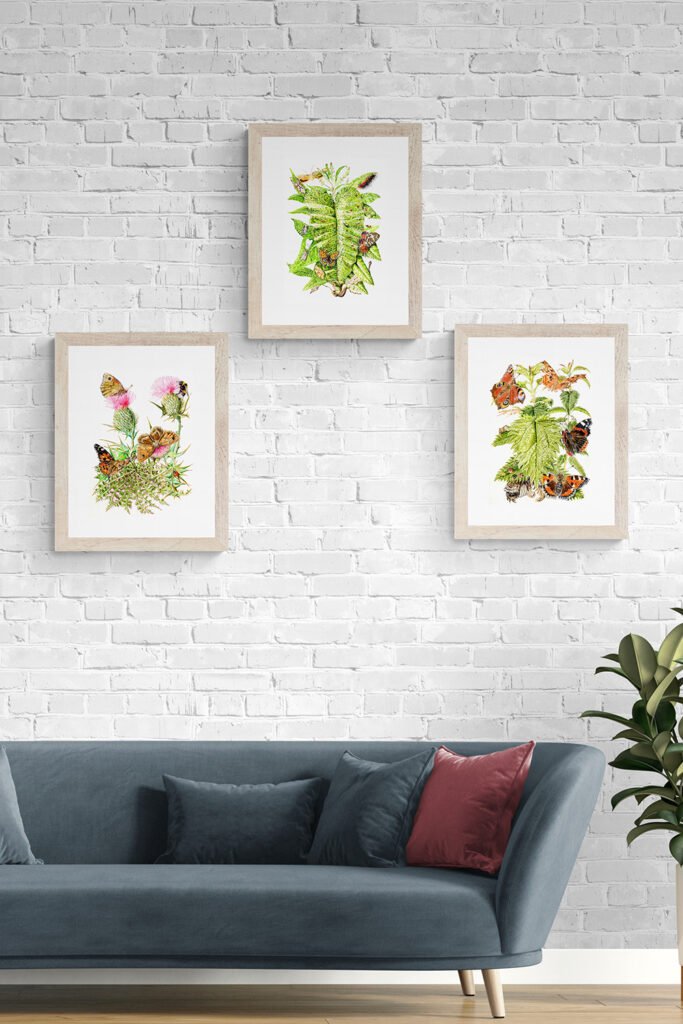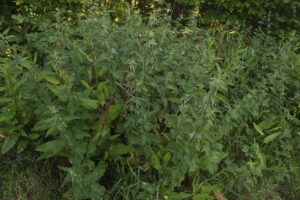THE WILD CORNER
It is interesting to contemplate a tangled bank, clothed with many plants of many kinds, with birds singing on the bushes, with various insects flitting about, and with worms crawling through the damp earth, and to reflect that these elaborately constructed forms, so different from each other, and dependent upon each other in so complex a manner, have all been produced by laws acting around us.
Charles Darwin, The Origin of Species
Why the wild corner?
Do you ever feel that you cannot help wildlife or the environment, or that you don’t know how or don’t have the resources? Or do you wonder why wildlife is disappearing locally.
There is often confusion with the bigger (global) conservation picture and what we as individuals are capable of. Whilst ‘doing something’ about it is great, it’s worth taking a moment to consider how much doing nothing can do to save the environment. And that is the philosophy of the ‘wild corner’.
We believe we should act locally first or how can we tell anyone else they should be doing more.
The power of doing nothing for nature
I don’t need to leave my own garden to hear or see the fervour of human activity. Lorries rumble past with knick knacks, garden furniture, DIY products and luxury food and goods from far far away. Part of me loves international trade and globalism but it has a dark side! Cheaply made tat, which has a cost on the environment and people local to its production. All the way from its raw materials and production through its use (often short-term) to its disposal. Gardeners and workmen, hammer at decking, mow lawns and verges, strim what they consider to be untidy or unsightly hedge-banks, jet wash cars and patios, paint fences with toxic paint to deny the dead wood to insects.
What they are doing is not illegal but I am at odds with it. Mostly it is busy-ness for busy-ness’s sake or for tidiness’s sake or for fear of criticism from judgemental tidy people. These latter people are an environmental hazard I’m sorry to say. I try to be non-judgemental and to live and let live but let me have this moment. Nail-guns, mowers, strimmers, and jet washers, all now common tools in a bloke’s arsenal of boy-toys, are produced in huge factories and shipped thousands of miles. In their short lives they contribute to global emissions and almost universally destroy nature rather than help it along. They create a cacophony of noise so that we can’t hear birdsong and birds can’t hear each other. Can I lead by example? Yes I can.
Tree Planting
Much is made of the importance of planting trees but not all of us have room, know which tree to plant or have time to care for them or manage their impact. Also, trees are not always the best thing. Deciduous trees can take many years before they are actively absorbing CO2 and many only do it in the summer whilst a meadow does it all year round. Many of our most threatened species need open areas and meadow and not trees and woodland. Whilst trees are important, I would prefer to see them planted on re-commissioned retail parks and supermarket carparks (with the structures strengthened so cars (preferably electric ones) can be parked on the roof as well as underneath) than in gardens or existing meadows and pasture or on the fast-lane of the motorway where much of our carbon emissions are generated.
Mad as this may sound, the best way of reversing our destructive trend is to actually reverse it. Perhaps not so mad when put like that. Road building, repairs, transport and fast driving all contribute to destructive emissions that would reduce if roads were made smaller, less numerous and more difficult or costly to use. This would make rail transport and local goods better value for money and reduce emissions more. All this would make life for people and wildlife much healthier on roadsides and in gardens. But what about inside the garden?
You can make a difference
You can make a difference in your own home and garden with no knowledge, resources or expense and with no effort whatsoever. Whilst many of your neighbours are battling nature, why not sit back and let nature do its thing. A lawn or a metre square patch of a flowerbed have just a handful of plant species in them. In many, perhaps most, gardens they are from other parts of the World and are inedible to insects here. With farming and urbanization becoming ever more intense, every square metre counts for insects and other invertebrates and gardens can be heaven or hell for them.
We recommend a full garden approach but even a small corner, if left alone or ‘lightly managed’ if you prefer, can be an oasis for wildlife and some of the worst feared outcomes are the best for our little neighbours and dependents who were here long before we were. A wild corner in your garden no matter how small, could make a big difference.
A ‘Holey’ Trinity
Whilst the Buddleia also known as the butterfly bush, is highly praised and even encouraged as a butterfly attractant, it’s a non-native plant. It is often invasive with a quite short flowering period (usually in mid-summer). And, it takes up and shades large areas which could be flower rich grasslands with food for many species. It is not the only plant to attract butterflies and its leaves are almost useless!
Thistles
Thistles provide a similar nectar supply for bees and butterflies from spring till autumn. They provide seeds for finches, food and refuge for caterpillars and their leaves are the food plant of the painted lady. They are havens for ladybirds. We are conditioned to think of them as ugly intruders but please look again. They are as beautiful as sea urchins, starfish and hedgehogs.
Nettles
Along with thistles, nettles are living proof that some plants at least, don’t want to be eaten and are doing something about. There is a constant war raging between plants and animals, This results in many insects being restricted to certain plants and many plants being toxic to us and our livestock.
The nettle, when cooked, is very edible to us and, when raw is the food plant of our best known butterflies: small tortoiseshell, peacock, red admiral, and comma. As nettles are tolerated less and less and with ever decreasing space for them, as land disappears under plough, block paving, tarmac concrete, lawn, Astro turf and ornamental shrubbery. It is no wonder that our butterflies are disappearing.
There are many references to the benefits of nettles on foraging blogs, so why not cultivate your corner of nettles? It will not only support wild life but also add to your culinary plot.
There are lots of nettle soup recipes out there, but this one of our favourites
Nettle Soup
Ingredients
- Half a basket of stinging nettle tops, or fresh-looking larger leaves
- 2 tbsp Olive oil
- 1 large onion peeled and finely chopped
- 1 litre vegetable stock
- A large potato, peeled and cut into cubes
- 1 large carrot, peeled and chopped
- Sea salt and freshly ground black pepper
- 2 tbsp coconut milk
- Handful of pumpkin seeds
- 1/2 tsp Smoked paprika
Method
Wearing rubber gloves, sort through the nettles, discarding anything you don’t like the look of and any thick stalks. Wash the nettles and drain in a colander.
Heat the oil in a large saucepan, add the onion and cook gently for 5-7 minutes until softened.
Add the stock, nettles, potato and carrot. Bring to a simmer and cook gently until the potato is soft, about 15 minutes. Add the coconut milk.
Remove from the heat. Using an electric hand-held stick blender, purée the soup and then season with salt and pepper to taste.
Ladle into warmed bowls and float a little more coconut milk on top. As this melts, sprinkle on the pumpkin seeds which have been toasted and seasoned with the paprika.
(From the river cottage nettle soup recipe)
Dock
Alongside nettles, their traditional remedy, the dock often grows, but is otherwise disregarded. However, docks and sorrels feed numerous species of moth, including the spectacular garden tiger. And the pretty small copper butterfly. It also provides food and shelter for ladybirds like the other two garden heroes above.
I love looking for holes in the leaves of these plants, I call them the ‘holey’ trinity. The holes mean they are doing their job supporting our native beauties.
Whilst many other rarer or less familiar plants are encouraged and praised, and will turn up in your forgotten corner these three make a great start. Their leaves feed many other insects and provide shelter and refuge; their flowers provide nectar and pollen, for insects other than butterflies and moths. These in turn are food for birds, bats and hedgehogs. Their sap feeds aphids who’s populations act like herds of tiny wildebeest, supporting brightly coloured spotted lions, the ladybirds. Seed eating birds feed on their seeds. They in turn are prey for sparrowhawks. All these animals interconnect with other animals and plants to create rich eco systems around your home. Are you convinced that you need a wild corner yet?
Celebrate weeds
For these reasons, we think that these plants should be celebrated. Why not adorn your walls with these wildlife heroes? Roses and exotic plantscapes are so often portrayed in art, why not nettles?

Wild Child
We think children should know from the earliest possible age what butterflies, ladybirds and garden birds need. And in almost every case, they need a weed! The wild corner is a sanctuary.
By encouraging our younger generations to engage with nature at home, they will get to know their local wildlife. They’ll begin to take responsibility for it with a degree of understanding that many adults today have completely lost or never had. This will allow them to empathise and understand ecological problems. This fundamental knowledge in the mind of a child, creates benefits further afield leading to more people caring for the whole planet. Our children’s wild corner products will be ready soon!





